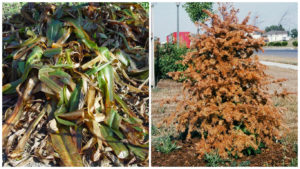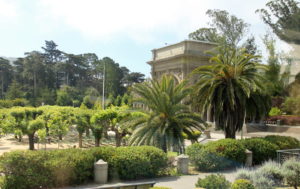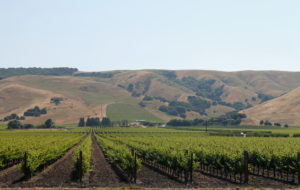What If We Didn’t Have Such Wild Weather Rides?
June 6th, 2017
You can’t blame a lot of plants for not wanting to grow in central-Pennsylvania gardens.
We’ve gone as high as 107 degrees in summer and as low as minus 22 degrees in winter.
We can go from 85 degrees on a fall day down to below freezing the next night… and vice versa in spring.
Nor’ easters snap our trees, deluges rot our conifers, and droughts kill our lawns.
No wonder we lose out on being able to grow so many wonderful plants. It’s perilous territory for any plant not willing or able to roll with the punches.
But what would our landscapes be like if we didn’t have such wild weather rides?
No need to guess because I just got back from seeing the kind of plant palette that’s possible when you iron out the extremes.
The central coast of California is a rare part of the world where temperatures stay in that sweet spot of the 60s and 70s all year long.
Winters are damp but seldom much below 40 degrees, and they’re free from the snow dumpings and ice storms that create havoc with our plants.
Summers are dry but not boiling enough to melt out cool-preferring species like lady’s mantle, wallflowers, lobelia and such.
Just about all plants are happy in that medium range. It explains why palm trees grow in San Francisco despite Mark Twain’s supposed quote that the “coldest winter I ever spent was a summer in San Francisco.”
Conditions may not be ideal for everything, but a huge variety of plants will grow well when freed of extremes. Moderation is a virtue.
That’s why central California is such a biodiversity hot spot, able to produce a staggering percentage of America’s grocery-store produce year round while also being mellow enough to grow ornamental trees, flowers, shrubs, and herbs from just about every corner of the Earth.
I got to see this horticultural nirvana in action last month during one of our group tours that took us from the Napa Valley wine region down to the Salinas Valley “salad bowl of America” and inland to the Central Valley fruit and nut orchards.
See a photo gallery from our California tour
Read my article on how this small part of California feeds the U.S.
It’s amazing how well plants do when the weather and soil is kind to them. Evan Oakes, an Extension educator in Monterey County, said the weather is so stable in that region that no one pays much attention to the forecasts. The only question is whether it’s going to be sunny or cloudy.
Particularly telling was a stop at the San Francisco Botanical Garden, a 55-acre, city-run garden within San Francisco’s Golden Gate Park (which is bigger than New York’s Central Park, by the way).
The most striking feature of the garden is the astounding range of plants growing there. Most of the garden is sectioned into theme gardens by region of the world – the Southeast Asian cloud forest, plants from the high elevations of South America, plants from the Mediterranean region, and collections from New Zealand, Australia, South Africa, and Chile.
In all, you’ll find 8,000 different plants from around the globe – unfazed by unfamiliar neighbors and a new home far, far away.
I’d estimate that 80 percent of this garden would be impossible to duplicate in central Pennsylvania. The majority would croak in the first year from either the heat or cold.
Even the seas of grape vineyards from Napa Valley south are blessed by the lack of our summer humidity and the Japanese beetle – that tormenter of Pennsylvania grapes (not to mention roses, hibiscus, linden trees, Japanese maples, crabapples, etc. etc.)
But given the stability and moderation of the central California coast’s climate, just about any plant seems to work there.
It must be nice. We just have to try harder and pay much more attention to plant selection.
Pushing the envelope is an option for us. However, that means resorting to tricks like wrapping tender plants in winter, babying them with shade cloth and water in the summer, and moving the wimpiest fare inside come fall.
I do a little of that. But it’s a lot easier to just take a trip to central California and marvel at what they can get away with.










